

We’ve all admired photos of perfectly styled open kitchen shelves – those neat stacks of plates are very appealing, and the absence of upper cabinetry promises to bring an airy feel to a small space. But how practical is the maintenance of open shelves? What should you wear for them? Where do you put the other stuff? If you’re trying open shelving in your own kitchen but aren’t sure where to start, here’s help. We’ve got all the dos and don’ts of designing an aesthetically pleasing and functional open shelving.
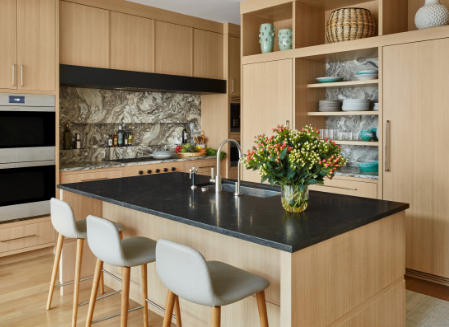
If you’re trying to design them when there’s already something on the shelf, it’s simply impossible to see what you’re doing. Yes, it’s a project to completely empty the shelves, but it’s worth it. If it seems overwhelming, then only handle one shelf at a time. Before proceeding, remove everything and wipe down the shelves.
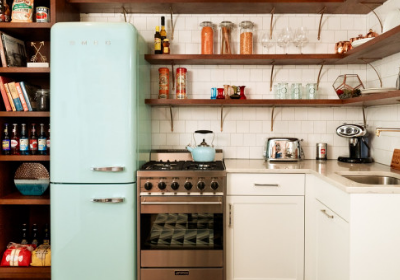
Anything with a cool label can be used as a decorative element in the mix – like canned imported tomatoes, beautiful tea cans, and jam jars. These items are perfect for storing on the upper shelves because you don’t need to have frequent access to them.

As for the lower shelves, actually think about the items you choose to place there. It’s a great place to sell your favorite coffee cups, everyday plates and bowls, and basic water and wine glasses. If you find that you can’t fit all your daily items on the shelves, put some away. Do you really use 30 glasses or wine glasses a day?
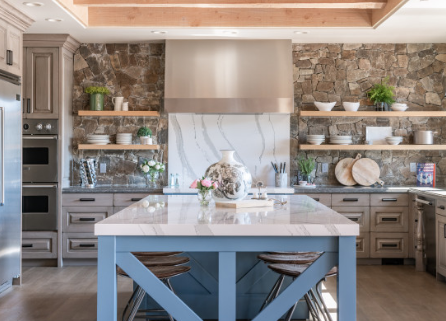
Even if you rarely use a big, heavy pot or casserole, think twice before lifting it to the highest shelf. It may not be safe to lift and drop heavy objects from a height, and even if your shelves are sturdy, open shelves often can’t handle as much weight as regular cabinetry. To be on the safe side, lower the largest potted plant.
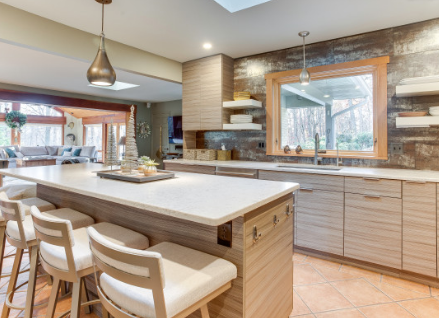
Pay attention to the colors in the kitchen – can you find a line of a certain shade running through it? Recipe spines, teacups, food packaging, and the colors of fruits and vegetables can all be part of an intentional design.
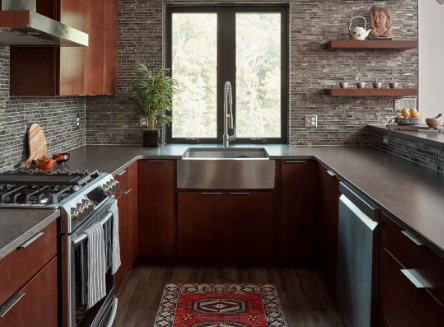
Ideally, you’ll have a mix of open shelves and closed cabinets, so there’s no need to display everything you have. Keep this in mind as you fill up these shelves. Stick to matching cutlery and glassware, or at least keep your choices color-coordinated. Remove out-of-place looking disposable items, freebie cups, kitchen tools that look cluttered, and anything with dangling strings – these should be in cupboards and drawers, not in the open air.
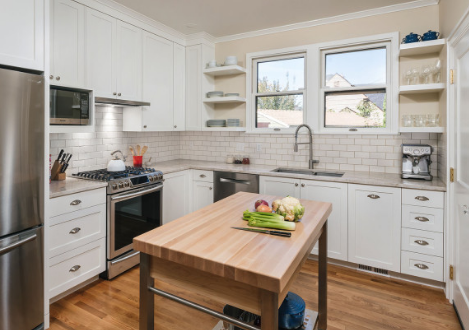
Open shelving can be a godsend for small spaces, making your room look much larger than it really is.
Although it may be tempting to stuff shelves, crammed shelves can ruin the space enhancement effect. In small spaces, you have to be extra vigilant about editing items on shelves. Stick to one color (you can’t go wrong with white) and keep only the essentials.

When filling open shelves and grouping items accordingly, consider kitchen tasks such as baking or making coffee. It’s convenient to have all the required items in one place, and grouping items in this way often works well visually as well. For example, stack cake holders, pie pans, molds, and mixing bowls on shelves above the storage blender.
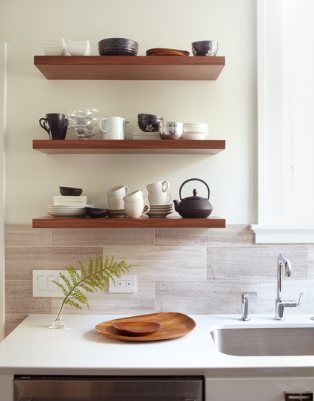
Make your arrangement visually interesting by stacking small items on top of each other. Teacups and saucers stacked in a slightly drunken place are more appealing than neatly arranged. Stack bowls on plates and small plates on large plates; Place the utensil in an upright position in a glass or vase.
There are no hard and fast rules for styling; Just play around and see what works for you.
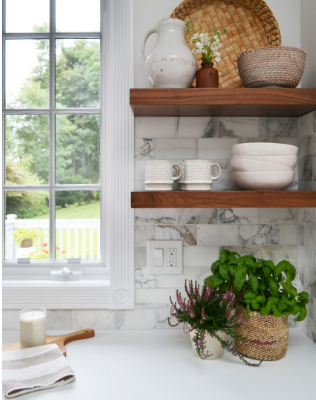
Wood, ceramic, glass, metal – too much material in one material can appear cluttered and unfocused. Stick to one or two mostly for a sleek, chic look.
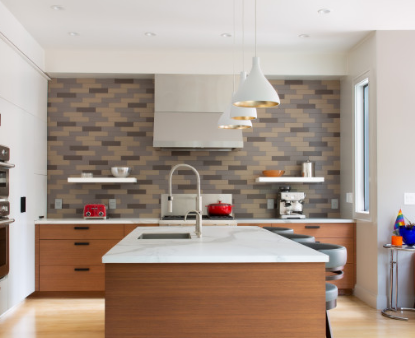
If you live in California or other areas where earthquakes are likely to occur, a large amount of glass on an open shelf can be a disaster.
Place the glassware behind a closed cabinet door, preferably one with a magnet or other security system, to prevent the door from flying open in an earthquake. On open shelves, consider installing a small lip to keep items in place in the event of a small earthquake.
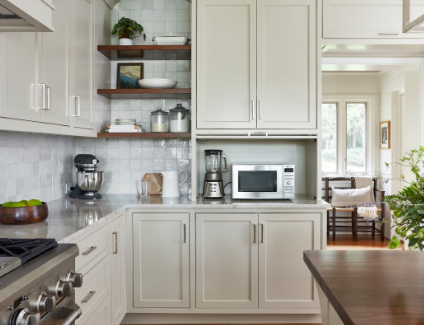
It may be convenient to keep frequently used dry goods on open shelves within easy reach, but the original packaging is hardly appealing and often messy.
Pour ingredients into sturdy, airtight glass containers to organize items and help keep your items fresh for longer. Even basic foods like oats, flour, and rice look a little artistic in a simple glass jar on a shelf.
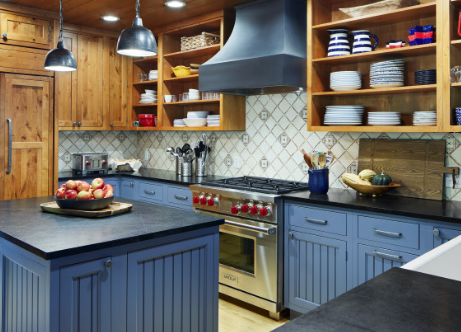
Placing a near rack near the dishwasher? Use them to store your everyday dishes, and you don’t need to travel long distances to store them. A shelf close to the stove? Commonly used cooking tools and spices are stocked. Having what you need at hand will make cooking and washing easier and more enjoyable.
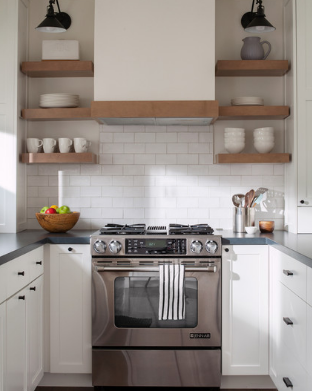
If close to the stove, open shelves can accumulate dust and even grease. Storing frequently used items on open shelves will eliminate some of the need for dusting and cleaning, as you will be using and washing these items regularly anyway. But over time, taller shelves and less used items can get dirty. The best way to do this is to dust and wipe down the surface regularly, trying to keep it on top as much as possible.
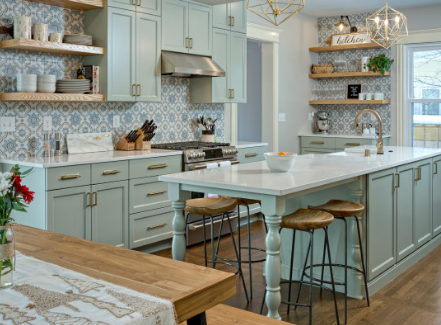
Open shelves are natural places to inject personality into the kitchen; Just don’t overdo it. You just need to stuff the back of the plate with some framed art prints, a plant (fresh herbs are the most popular), and maybe a garnish or two will suffice.
Not sure if you’ve gone too far? Use this rule of thumb: if you can’t easily get what you need because your decorations get in the way, it’s too much.
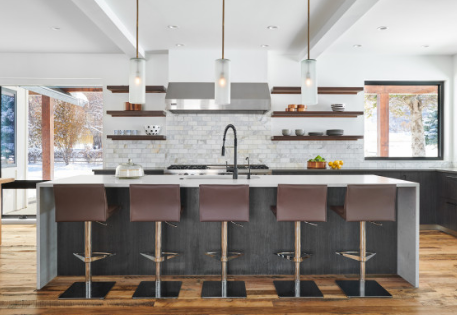
In a kitchen with an extra-high top shelf, it can be difficult to know exactly what to put in. I said don’t worry – just let it be naked. Sure, you can put plants there (but they’re hard to water), fake plants (but they might look tacky), recipes (how to get them easily?). Or ornaments (which will only collect dust), but why? Empty shelves are easy to clean, make the ceiling look higher, and make the room look less cluttered.